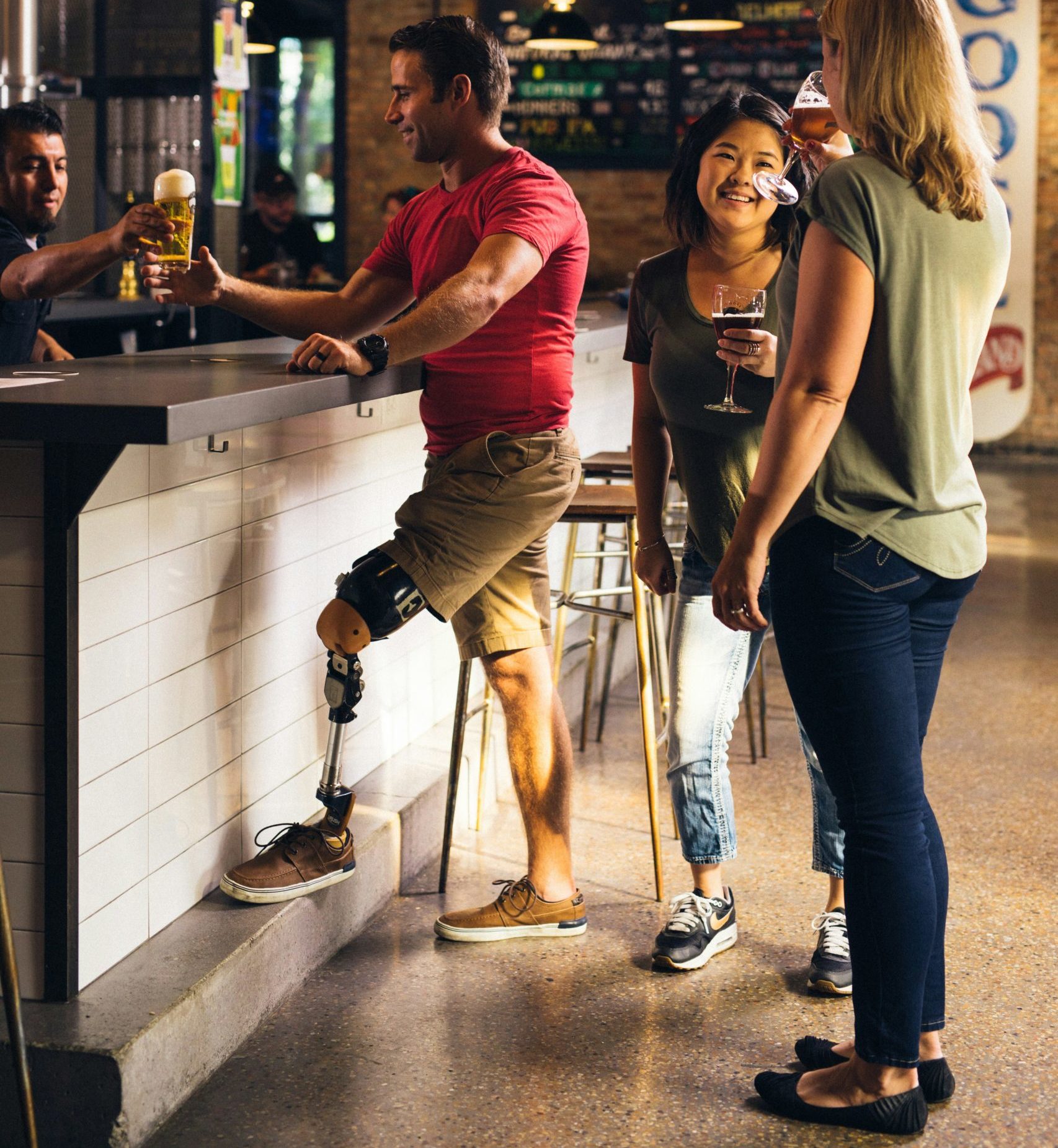Amputees suffer from a complexity of issues and ailments that require medical attention from a multitude of Allied health Professionals. The journey to walking again for amputees is a long one and can take over a year.

Student Article Series
The Journey to Walking Again: A Roadmap for Amputees in the UK

Lower limb amputations can occur for a variety of reasons, some of the most common causes for amputation include –
- Peripheral Artery Disease (PAD) – Reduced blood flow to the limbs due to atherosclerosis can lead to tissue damage and non-healing wounds, often necessitating amputation.
- Diabetes – Amputation may be required when diabetes-related complications such as neuropathy and peripheral vascular disease are not effectively managed.
- Trauma – Severe injuries, such as those from accidents, burns, or combat-related incidents, may result in irreparable damage to limbs, leading to amputation.
- Cancer – Tumours in the bones or soft tissues of the limbs may require surgical removal, resulting in amputation.
- Infection – Untreated infections, particularly those that affect bone or deep tissues, can spread and become life-threatening, necessitating amputation to prevent further complications.
- Congenital Defects – Some individuals are born with limb abnormalities or conditions that impair limb function, which may require surgical intervention, including amputation, for improved mobility or quality of life.
It is estimated that there are over 25000 amputations every year in the UK. Amputees go through stages of care that require complex decisions resulting from perpetual examinations. The following sections briefly provide some details that give insight into the journey that amputees undergo in their roadmap to walking again.
Acute Care After Amputation
In acute settings right after amputations, a multitude of allied health professionals work together in designing care plans for amputees.
Physiotherapists are responsible for immediate post-operative needs, such as pain-management and early mobilization exercises to prevent joint contractures and weakening musculature as well as facilitating independence in movements like sitting from bed to wheelchair or on toilet.
Occupational therapists are responsible for helping amputees adapt to their new physical limitations. They provide education on caring for their limb and for adjusting any new physical assistive equipment they may receive.
Psychologists are responsible for counselling patients before and after operation. They offer essential mental support and help their patients and their families cope with the trauma of losing a limb as well as addressing fears and anxieties.
Dietitians are responsible for educating patients about their dietary needs in response to their acute needs.
After patients reach a level of independence with their pain management and are capable of some form of physical navigation within hospital settings, allied health professionals collectively work together to ensure that patients will have independence with their movements as well as with daily living activities at their homes. This marks the beginning of intermediate care for amputees.

Intermediate Care After Amputation
In intermediate care settings for amputees, allied health professionals task themselves with assisting patient recovery with respect to physical outcomes designed to measure the level of independence a patient will have at home.
Physiotherapists provide personalized exercise programs that focus on balance and transfers more heavily, with the aim of independence in these movements. They assist patients in regaining strength and mobility. Due to amputation, there will be differences in how a patient balances themselves when transferring, and hence physiotherapists assist by teaching various techniques that aim to mitigate balance issues during transfers.
Occupational therapists focus more heavily on enhancing adaptive techniques such as dressing, grooming and household chores. They often visit patient homes to collect measurements ensuring that patients will be able to use a wheelchair at home and fit other equipment. They also consider the persons occupations, such as hobbies, and supporting them to re-engage with this post amputation.
Psychologists maintain the emotional and mental support they offer to patients.
Social workers and care workers help facilitate patient discharge plans, with the latter helping the patients physically cope at home if need be. Patients are then cared for by home visits and in outpatient clinics by a variety of allied health professionals.

Home and Outpatient Care
In home visits, physiotherapists and occupational therapists work together in ensuring that patients are physically coping well at home and resuming normal lifestyle activities. This phase is usually marked by goal setting for patients with regards to their physiological goals for using a prosthetic leg.
Patients also visit outpatient clinics that provide gym facilities and early walking aids that act as a substitute to a measured prosthetic leg.
Physiotherapists in outpatient sessions help patients develop balance, strength and independence of movement using early walking aids in order to prepare for prosthetic leg physically. Patients can normally use early walking aids if their wound is healed, and pain is manageable.
Occupational therapists will assist patients in learning or adapting their technique with an early walking aid in kitchen, bathroom, and staircase settings.

Prosthetic Rehabilitation & Learning to Walk Again
Prosthetists are responsible for fabricating and designing custom prosthetic limbs measured with respect to the patients specific needs. Orthotists use a range of physical assistive aids to help correct any issues or deformities in nerves, muscles, and bones.
Physiotherapists continue ongoing rehabilitation after prosthetic fitting to ensure successful independence in movement. Occupational therapists help patients adapt and integrate their new prosthetic limb into daily life.
Podiatrists are responsible for preventing foot infections and ulcers on the non-amputated side to help prevent future amputations. They also provide education on maintain foot health for patients.

Summary
A multidisciplinary approach spearheaded by allied health professionals is required to facilitate the journey to begin walking again for amputees in the UK.
After the administration of acute care, physiotherapists provide immediate support post operation, while occupational therapists help amputees adapt to various physical limitations and psychologist play a vital role in supporting them with any mental health issue they face.
Physiotherapists and occupational therapists ensure that a person is able to cope at home and resume their day-to-day activities, this involves the introduction of walking aids.
Prosthetists are required to create custom prosthetic limbs; orthotists ensure the correction of physical issues and podiatrists are key in the prevention of future complications.
This combined effort by AHPs allows amputees to navigate the complex journey with comprehensive care and support in the quest for regaining mobility and most importantly independence. Demonstrating the physical, psychological and practical aspects of rehabilitation.
References Ahmad, N., Thomas, G.N., Gill, P., Chan, C. and Torella, F. (2014) Lower limb amputation in England: prevalence, regional variation and relationship with revascularisation, deprivation and risk factors. A retrospective review of hospital data. Journal of the Royal Society of Medicine 107 (12), 483–489. NHS (2023) Amputation. https://www.nhs.uk/conditions/amputation/ Accessed. NHS (2015) Prosthetist/orthotist. https://www.healthcareers.nhs.uk/explore-roles/allied-health-professionals/roles-allied-health-professions/prosthetistorthotist Accessed.
